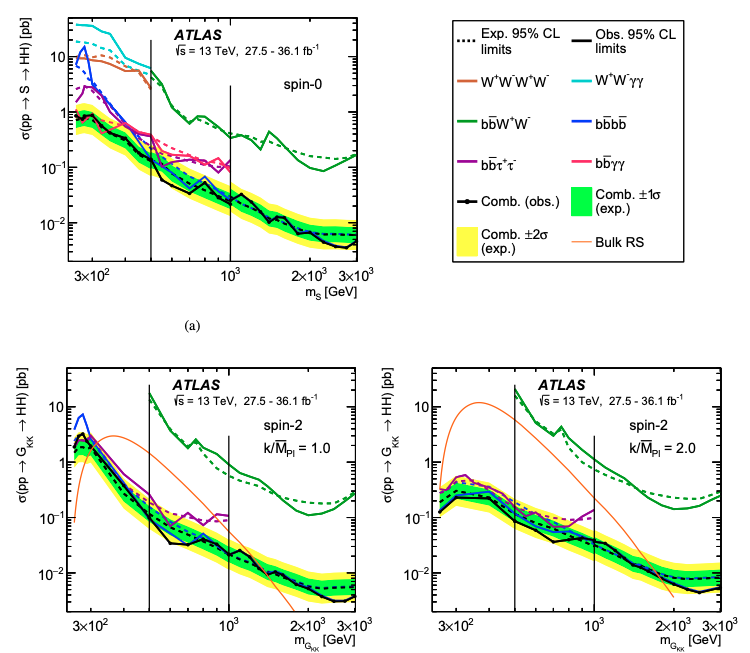2023 Reading List
Books I read in 2023
Today, the ATLAS di-Higgs combination result using data from 2015-2016 went on arXiv. The result combines the results from six separate analyses, all of which target di-Higgs production in various final states. The final states included are bbbb, bbττ, bb𝛾𝛾, bbWW, WWWW, and WW𝛾𝛾 - b stands for a bottom quark, τ for a tau lepton, 𝛾 for a photon, and W for a W boson. The results from these analyses are combined to set the newest, best limits on di-Higgs production. First, this paper sets the observed upper limit on Standard Model (SM) di-Higgs production at 6.9 times the SM cross-section. It also sets limits on the Higgs self-coupling, constraining it to between -5.0 and 12.0 times the Standard Model prediction.

Last, limits are set on resonant production - production of di-Higgs events through a new particle beyond the Standard Model. We consider a scalar resonance, meaning a particle of spin-0, consistent with extensions of the Standard Model known as two-Higgs Doublet Models, shown in the upper left plot below. We also consider spin-2 resonances that are consistent with gravitons predicted in the Randall-Sundrum model, a warped extra-dimensions model, shown in the bottom two plots below. Unfortunately, no new physics has been found.

While I did not work hands-on with this paper, my work within the 2015-2016 bb𝛾𝛾 analysis contributed to this result. See the full paper here, and I’ll update this post once it’s officially published in a journal.
Books I read in 2023
Who will win this year’s cup?
Books I read in 2022
Just how lucky have the 18-3 Bruins gotten?
Interoperability is the name of the game
Books I read in 2021
I got a job!
Books I read in 2020
Revisiting some old work, and handling some heteroscadasticity
Using a Bayesian GLM in order to see if a lack of fans translates to a lack of home-field advantage
An analytical solution plus some plots in R (yes, you read that right, R)
okay… I made a small mistake
Creating a practical application for the hit classifier (along with some reflections on the model development)
Diving into resampling to sort out a very imbalanced class problem
Or, ‘how I learned the word pneumonoultramicroscopicsilicovolcanoconiosis’
Amping up the hit outcome model with feature engineering and hyperparameter optimization
Can we classify the outcome of a baseball hit based on the hit kinematics?
Updates on my PhD dissertation progress and defense
My bread baking adventures and favorite recipes
A summary of my experience applying to work in MLB Front Offices over the 2019-2020 offseason
Books I read in 2019
Busting out the trusty random number generator
Perhaps we’re being a bit hyperbolic
Revisiting more fake-baseball for 538
A deep-dive into Lance Lynn’s recent dominance
Fresh-off-the-press Higgs results!
How do theoretical players stack up against Joe Dimaggio?
I went to Pittsburgh to talk Higgs
If baseball isn’t random enough, let’s make it into a dice game
Random one-off visualizations from 2019
Books I read in 2018
Or: how to summarize a PhD’s worth of work in 8 minutes
Double the Higgs, double the fun!
A data-driven summary of the 2018 Reddit /r/Baseball Trade Deadline Game
A 2017 player analysis of Tommy Pham